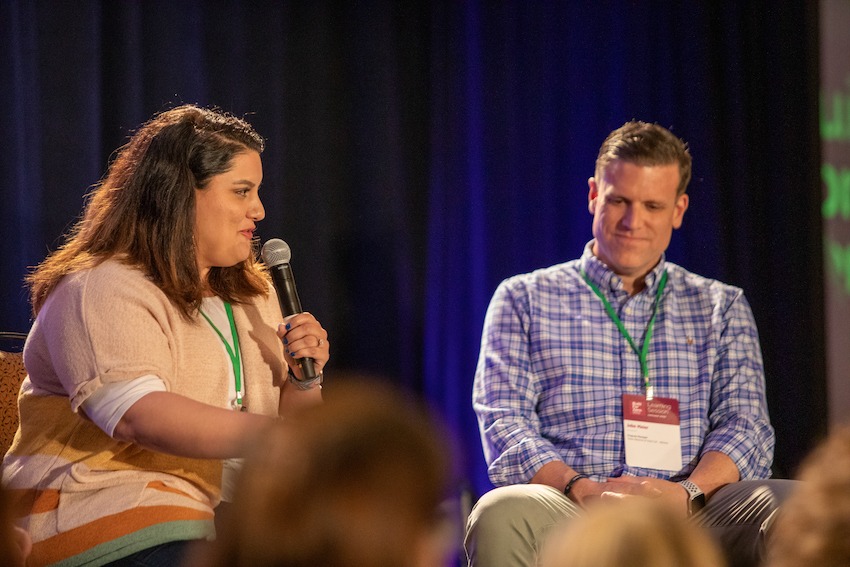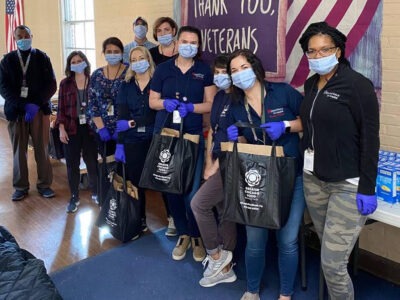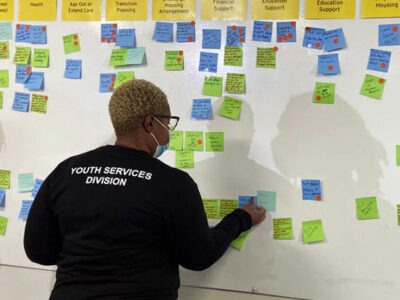In 2017, Rockford, Illinois, first pushed the boundaries of what was understood to be possible in solving homelessness.
It became the first community in the country to achieve functional zero for both veteran and chronic homelessness, making homelessness rare and brief for both populations. The achievement was monumental, but the period of celebration was short.
“We didn’t just sit around and say, ‘that’s good, let’s take a break,’” said Jennifer Jaeger, Community Services Director at the City of Rockford.
Being first hadn’t been their goal. The community wanted to get to a place where no one was enduring homelessness as a common, prolonged, or recurring experience. Jaeger and her team immediately began looking at the remaining populations, like youth, families, and single adults.
The work of ending homelessness is incredibly difficult. But the community found it virtually impossible when there was no way to define where they were headed. While definitions for making homelessness rare and brief existed for certain populations, like veterans, there was no definition for solving homelessness for everyone.
“We were getting a little frustrated as we worked toward zero for all,” Jaeger said. “There was no way to measure our progress. We were finding our way in the dark.”
The process of developing the definition
In 2014, Community Solutions announced the end of its 100,000 Homes Campaign. While the participating communities had successfully helped 105,000 of their unhoused neighbors get connected to homes, none of the communities had ended homelessness.
Since measuring progress by focusing on the number and rate of people being housed hadn’t ended homelessness, Built for Zero was launched to understand what it would take to help communities end homelessness. To do this, they needed definitions that were objective, measurable, simple, and dynamic to local conditions.
“We are defining an end to homelessness so we can create a goal that people are shooting for. ”
Aras Jizan.
“At the end of the day, we are defining an end to homelessness so we can create a goal that people are shooting for,” said Aras Jizan, Built for Zero’s Portfolio Lead for Data and Technology. “If we create a perfect definition in a lab, but no one can actually figure out if they are meeting it, then it’s not going to drive the behavior change that we need and want.”
The first functional zero definitions that emerged focused on ensuring homelessness was rare, brief, and nonrecurring among veterans and people experiencing chronic homelessness. They echoed the milestones for ending other dynamic public health challenges, like epidemics, where cases are largely prevented, and immediately detected and resolved.
In 2020, communities that had already achieved functional zero for those populations began to request guidance on a definition for solving homelessness for all populations. At that time, no definition like this existed within Built for Zero or outside of it.
“Being able to define to your community what you are working on, what it looks like, and dig into that, allows your partners in your community to bring on the needed change,” said John Meier, Program Manager at West Central Texas Council of Governments.
Ramina Davidson, Built for Zero’s Zero for All Strategy Lead, began leading work to develop a definition. In addition to ensuring the definition for solving homelessness for all populations was measurable, simple, and dynamic, the team recognized the importance of ensuring the definition would be credible.
“We began finding community partners doing the work of ending homelessness to think through everything,” Davidson said. “What would it look like to end homelessness for everyone? Who would need to believe it, and what would make them believe it? We tackled everything together, from the purpose of the definitions down to the technical aspects, terminology, and data elements.”
In December 2020, Davidson and their teammates worked with 14 Built for Zero communities and a group of people with lived experience of homelessness to understand what it would take to prove that homelessness had been solved. Throughout rounds of refinement, community leaders also solicited feedback from local stakeholders including first responders, behavioral health practitioners, child welfare, and other service providers working with people experiencing homelessness. This bottom-up nature of developing the definitions began to reveal cracks in initial thinking and strengthened the emerging definition.
Functional zero for all
The definition that emerged was focused on ensuring homelessness within a community met four criteria:
All of these criteria are measured based on a community’s quality data, which is vetted as reliable, real-time, and comprehensive. This means, for example, that the community’s data includes person-specific data on every single person experiencing homelessness, covers the system’s entire geography, and is updated at least monthly.
“I think that the definition process — especially involving our community and working with Community Solutions — helped our community understand what we were aiming for and define where we were going,” Jaeger said.
Driving toward zero for all
In the meantime, communities like Rockford and Abilene used the definitions to accelerate and focus the work to make homelessness rare, brief, and nonrecurring for all.
“You start digging in and most of what you find is problems,” Meier said. “You get disappointed and wonder, ‘How have we been operating like this?’ But without the challenge of ending homelessness for all populations, a lot of these problems would stay in place. It’s an opportunity to dig in and make sure we’re doing continuous improvement on the overall system.”

In Rockford, it became clear that multiple sectors would need to partner in a different way — each owning its role — to become a community where homelessness is rare, brief, and one-time, for everyone.
“It seems like a big change from what we were doing, which was so targeted on different populations,” said Angie Walker, Homeless Program Coordinator at City of Rockford Human Services Department. “We were saying, ‘we don’t want anyone to be homeless anymore.’”
Today, the Rockford team working to end homelessness for all populations includes homelessness, health, the fire department, code enforcement, and education.
“We all work together and we see what’s working and what’s not,” said Shannon Kopp, the Mobile Integrated Healthcare Manager at the Rockford Fire Department. “We have a lot of people we’ve worked with in the past that haven’t jumped on board with us yet. They don’t see the vision that we’re seeing. But we’re not giving up on it. We’re going to continue to feed that garden and grow.”
Together, Rockford is continuing to sustain functional zero for veteran and chronic homelessness, as it continues to steadily reduce toward zero for all.
“Every day is hard,” Walker said. “But we just keep plugging it away. Every time we get somebody housed, that’s a win. We take all those wins and move forward, telling ourselves that we’re going to do this — we’re gonna end homelessness for everybody.”








